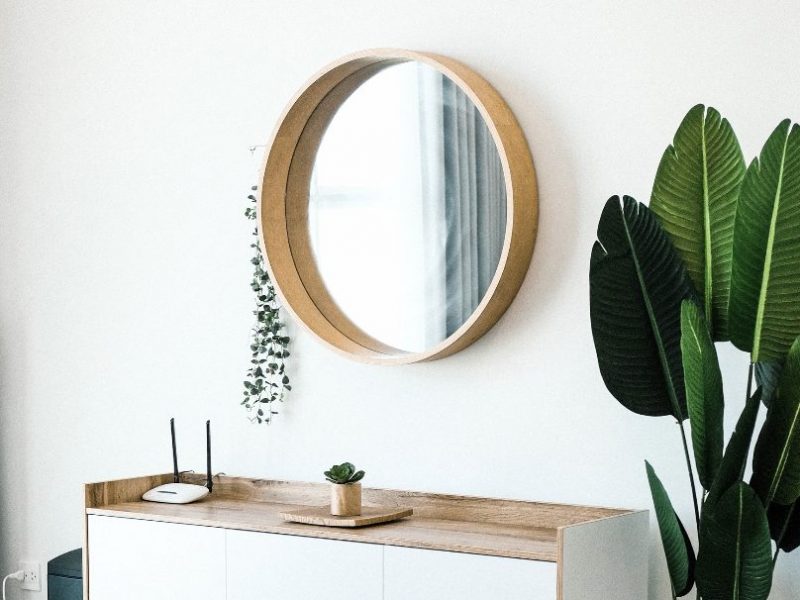
Top Hallway Houseplants
Our hallway is the first thing that people see as they enter our homes, it’s also the first thing we see when we come home, so why not make it as nice as it can be! But finding the right houseplants for your hallway isn’t always the easiest thing. They often need to be quite low light tolerant and can’t be too bushy either otherwise you won’t actually be able to get past.
But the most important thing about finding good hallway plants is finding ones that don’t mind being knocked around a bit. With people coming and going all the time, our hallway plant will inevitably get bumped and brushed. So with that in mind, here are the best plants for your hallway.
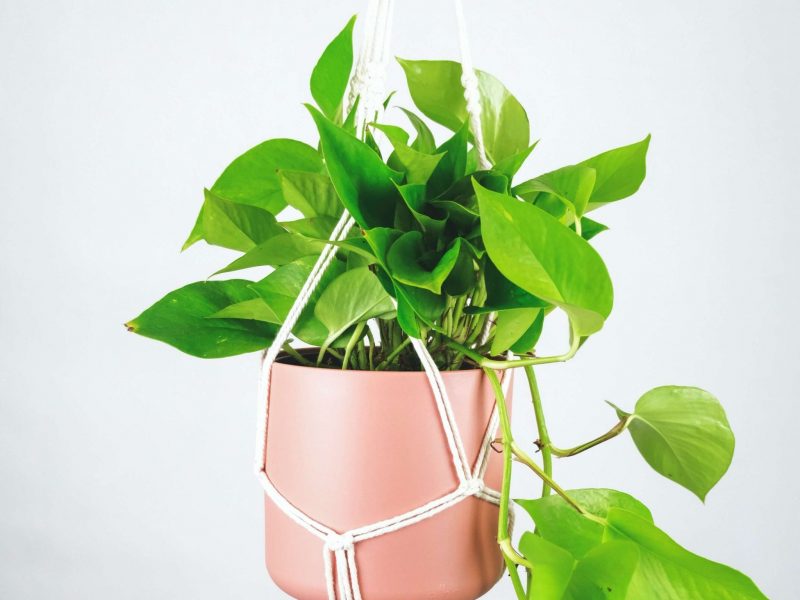
Devil's Ivy
Epipremnum aureum
These are pretty unique houseplants because they actually prefer lower-light conditions over anything else! That’s where the name comes from, as they are well acquainted with the darkness. If you have a variegated variety, it will actually start to lose its pattern if placed in too much sunlight. So you don’t need to feel guilty about putting a Devil’s Ivy in a shady spot because it will actually love you for it.
They are also pretty hardy plants in terms of their other care requirements. They don’t need complicated watering schedules or specific pruning so are perfect for any new plant parents. You can’t really go wrong with these at all!
When it comes to styling the Devil’s Ivy plant, shelving is where they thrive as it gives it room to cascade dramatically out of the pot. They can be trained to grow upwards by a wall or moss pole so the option is yours and depends on how much space you have in your hallway.
Find out more in our Devil's Ivy care guide.

Chinese Evergreen
Aglaonema
If you find that you are often killing your houseplants and you can’t seem to figure out why, then the Chinese Evergreen is a great choice for your hallway. Native to South-East Asia, they are so hardy that they’ll grow and thrive in basically any home so it’s the perfect beginner plant.
Chinese Evergreens have incredible leaves, full of splashes of white, silver or pink depending on the particular variety. They are quite slow growing though (as most hardy plants are), so don’t expect a lot of new growth every year.
Find out more in our Chinese Evergreen care guide.
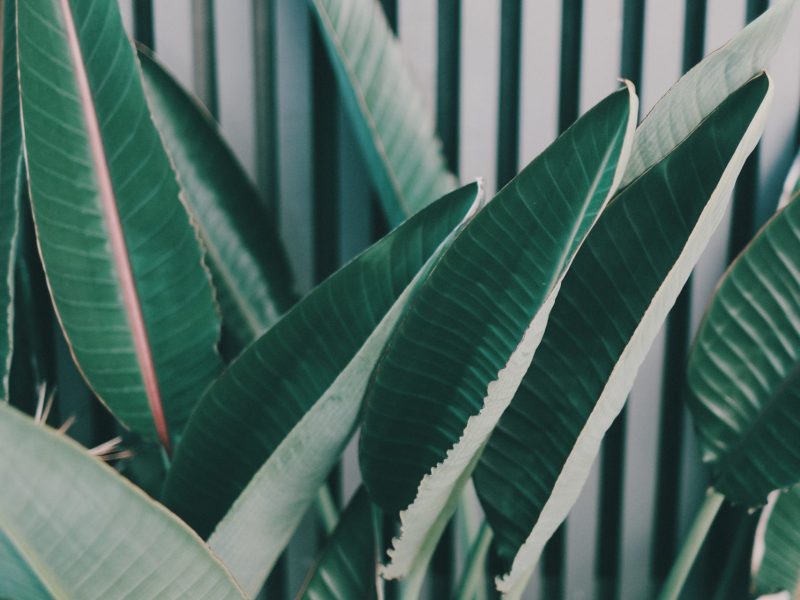
Cast Iron Plant
Aspidistra elatior
The Cast Iron Plant is a fantastic, glossy houseplant that gives a real tropical feel to your space. On top of all of this, they’re also pretty simple to care for and can take a good variety of conditions without issues. This hardiness is where they got their name from because they are just that tough. They only grow a few feet and aren’t super bushy which makes them great for hallways.
Cast Iron Plants are perfect for areas that don’t have quite as much light, and will happily continue to grow in a shady spot. If you provide a little extra humidity, using something like a spray bottle or humidifier, you can expect your Cast Iron Plant to really thrive.
We definitely recommend these as a starter or beginner houseplant due to their ease of maintenance, but don’t be disheartened by the fact that they do grow quite slowly.
Find out more in our Cast Iron Plant care guide.
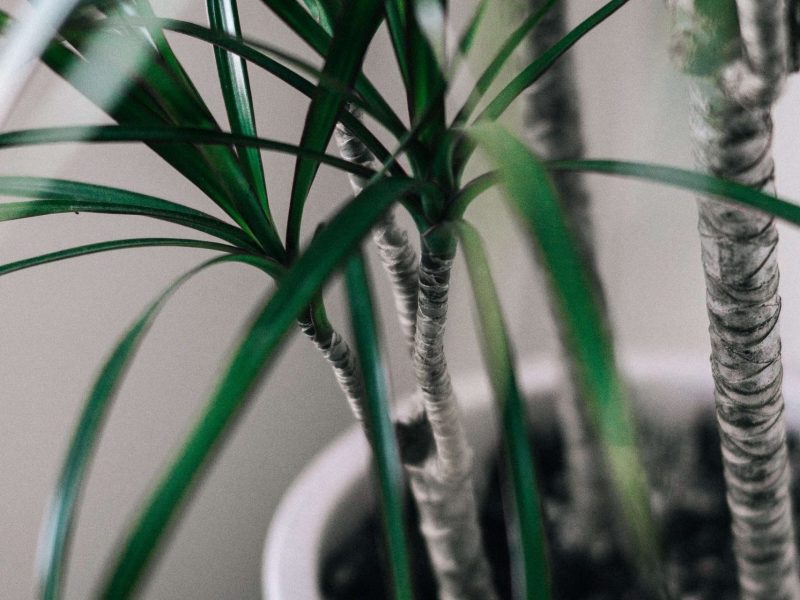
Dragon Tree
Dracaena draco
The Dragon Tree was actually our first ever houseplant and ignited our initial love for caring for indoor plants many years ago. Native to Madagascar, it’s a timeless plant that brings elegance and style to every room. They are also super easy to care for and are great at purifying the air which makes them the perfect entry-level houseplant.
You’ll have a hard time trying to kill a Dragon Tree as they are pretty drought-tolerant and forgiving when it comes to light, temperature levels and humidity so it’ll adapt well to every spot in your home.
Although they can reach up to 6 metres in their natural outdoor habitat, they’ll only ever get to about 1.5/2 metres when grown indoors (and even this will take years and years) so you don’t need to worry about it getting too big for your hallway.
Find out more in our Dragon Tree care guide.
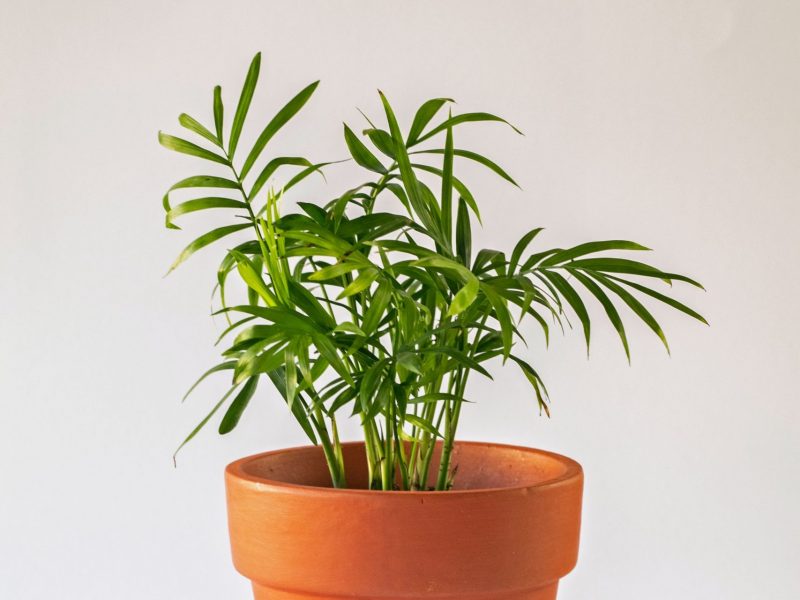
Parlour Palm
Chamaedorea elegans
If you want to grow a palm for your hallway but don’t have tonnes of space, then the Parlour Palm is the one for you! They are easy to care for and adapt well to lower light conditions. When kept indoors the Parlour Palm will stay quite small growing to a maximum of around 8 feet, this makes them manageable and easy to place anywhere in the home.
Provided with good light and some additional humidity in the dryer months your Parlour Palm will be perfectly happy – don’t be discouraged by slow growth as they can take several years to grow an extra 2 feet in height.
Find out more in our Parlour Palm care guide.
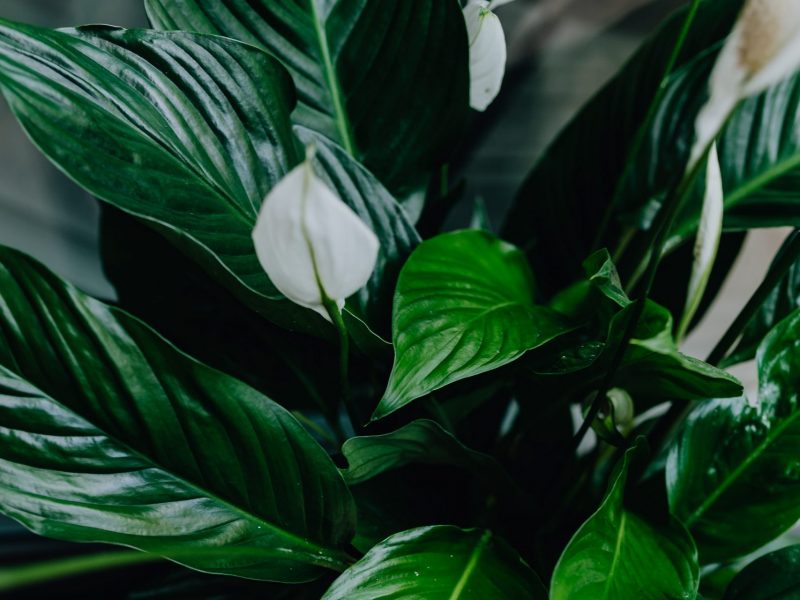
Peace Lily
Spathiphyllum wallisii
There’s a reason that Peace Lilies are so popular, and it’s not just because of their incredible white flowers. They are super low maintenance plants that can adapt and thrive in most homes. They can tolerate all light levels which is super rare for houseplants and makes them a great plant for slightly darker hallways.
Our favourite thing about the Peace Lily is that it really helps us plant parents out by drooping its leaves when it really needs water. This can help you spot underwatering before it’s really a problem. Within minutes of watering, the leaves will perk up – it’s pretty cool! And if we haven’t sold you on the Peace Lily yet, then you should probably know that they are also one of the best plants at purifying the air and removing chemicals from your home!
Find out more in our Peace Lily care guide.
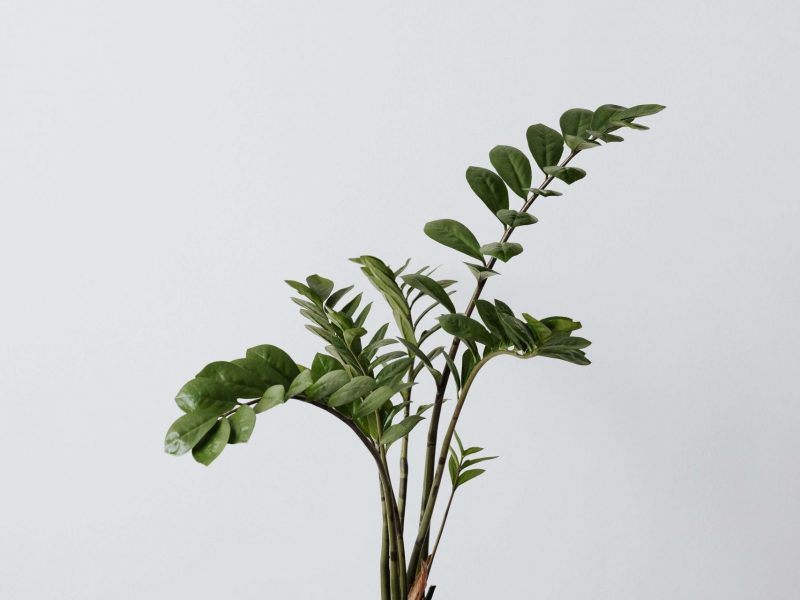
ZZ Plant
Zamioculcas zamiifolia
Also known as the Zanzibar Gem, the ZZ Plant is a great low-maintenance minimalist houseplant. Loved for their dark green glossy oval leaves, we recommend this one for those without a fantastic track record of keeping plants alive, but also for anyone looking for something smart and stylish to spruce up their home. They are very adaptable and will deal well with some bright but indirect light, as well as shady dark corners so whatever the light is like in your hallway, your ZZ Plant will continue to thrive.
The ZZ Plant is quite slow-growing so you won’t see new stems popping out all of the time. It’s important to note that they grow bulb-like roots called rhizomes so will need quite a large pot to really thrive and grow. This also means they are drought tolerant as they store water in their rhizomes.
Find out more in our ZZ Plant care guide.
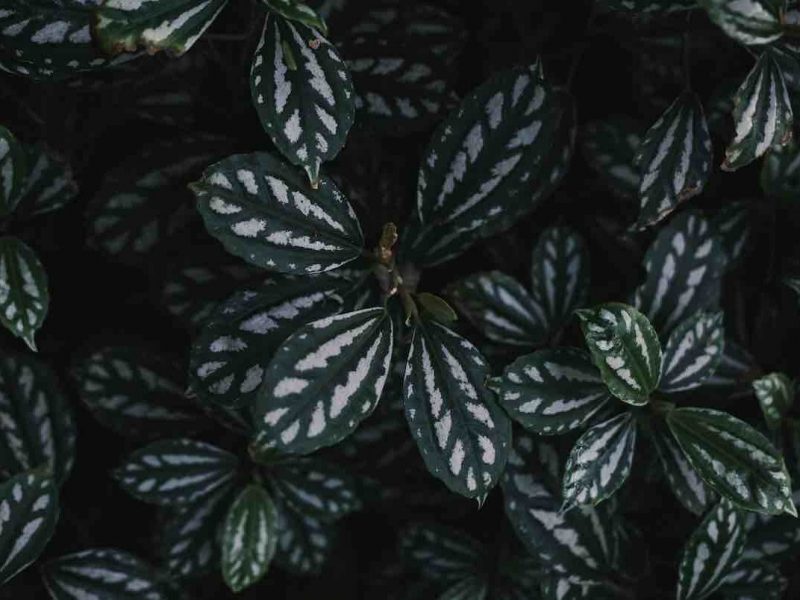
Aluminium Plant
Pilea cadierei
This low maintenance, fast-growing houseplant can sometimes be quite underrated in the houseplant world. Each leaf on an Aluminium Plant has its own unique set of silver streaks and splashes, so it’s easy to see how it got its name!
Native to China and Vietnam, this houseplant tends to spread out rather than grow tall so this is one for slightly bigger hallways. You must also be aware that its root system can grow so extensively that it can often break through the pot so you want to make sure you’re repotting this plant yearly!
When it comes to care, bright but indirect sunlight and moderate amounts of water will keep them happy. They are quite forgiving and easy to please so keeping this one thriving doesn’t need a lot of work so we often recommend this as a great entry-level plant.
Find out more in our Aluminium Plant care guide.
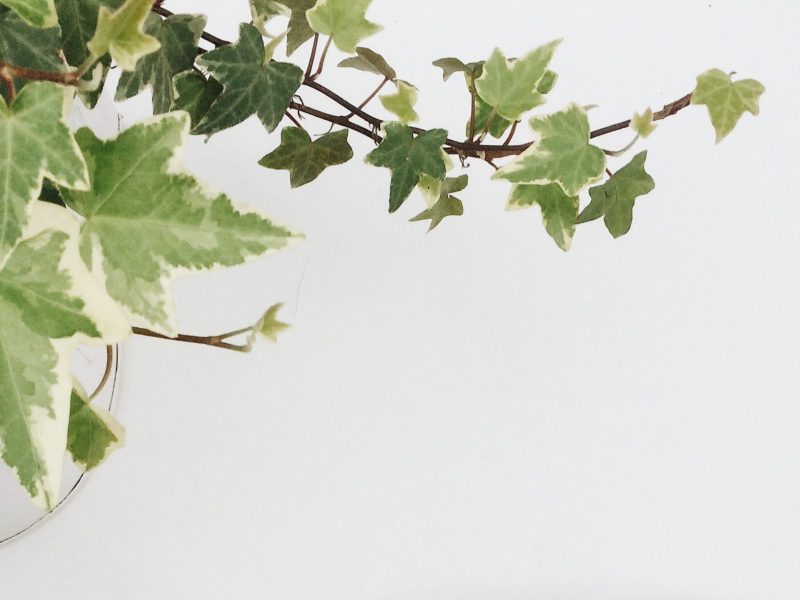
English Ivy
Hedera helix
Although they are most commonly known as outdoor plants, you can very successfully grow an English Ivy indoors as long as you give it enough light. We are obsessed with the white variegated English Ivy but if not given enough sunshine, the new leaves will lose all of that variegation.
Included in the NASA Clean Air Study, the English Ivy is great at removing toxins from the air so we recommend having this around your home. They are also believed to sometimes be able to improve allergy symptoms so as well as looking lush, they have great benefits for us too. They are also super fast-growing plants so you want to place them on a high shelf making sure they have enough space to cascade downwards.
Find out more in our English Ivy care guide.

Fishbone Cactus
Epiphyllum anguliger
Their flat zig-zag leaves make the Fishbone Cactus something really special. And they aren’t even super difficult to care for which is a bonus. It’s important to note that the Fishbone Cactus is actually native to the jungles of Mexico rather than a desert. This means the care is slightly different to what you’d expect when you hear the word Cactus. They need a little bit more water and don’t do so well in really bright spots.
You’ll be pleased to hear that they are also really easy to propagate and are non-toxic too! The only downside is that they can be a little bit difficult to find but we hope as they continue to grow in popularity that they’ll soon be in every plant shop across the world.
Find out more in our Fishbone Cactus care guide.

Lucky Bamboo
Dracaena sanderiana
Believed to bring good luck, the Lucky Bamboo is the ideal houseplant for those wanting to bring a little bit of greenery to their hallway, but who don’t have much space or aren’t great at keeping plants alive. The Lucky Bamboo thrives off being neglected and as long as they have enough sunlight and some warmth, they’ll happily live for a very long time. You can choose to grow them in either well-draining soil or a vase filled with water. The latter is great for forgetful waterers as there’s no risk of them drying out!
You can continue the gorgeous swirls on your Lucky Bamboo plants by simply rotating them every once in a while. The plant naturally grows towards the sunlight so you can use this to create the twists.
Find out more in our Lucky Bamboo care guide.














